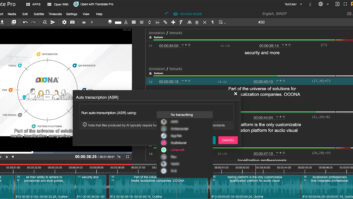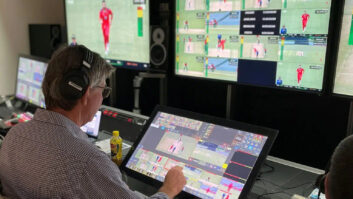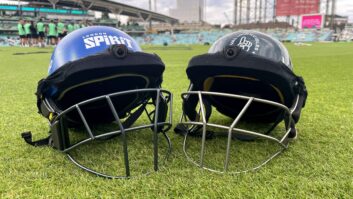
The performance of live subtitling is physical, a vocal exercise like public speaking or singing. If you possess the required aptitudes – essentially, you can simultaneously listen carefully and convert what you hear into clear written English – you combine these skills with the use of subtitle production software and start broadcasting. Theoretically, you don’t need prior knowledge of particular subjects; with thorough preparation, you should be able to subtitle politics, technology conferences or Wimbledon.
In practice, however, subtitling sport is generally more challenging than other, more conversational output. All sports have their own specific vocabulary – such as ruck, maul, scrum in rugby, lob, slice, chip-charge in tennis – and particular approaches to description and analysis. It’s also an inescapable challenge (or ordeal, depending on your perspective). The number of sports-only channels in the UK is well into double digits and counting, and accessibility regulations have exponentially increased the number of live subtitled sports broadcasts over the last ten years.
Targeted training accustoms subtitlers to the linguistic peculiarities of most regularly-televised sport. Cricket, however, is the respeaking Rubicon, equally provoking and perplexing to fans and first-timers. For whatever reason – gentlemen amateurs with creative writing skills, a thirst for categorisation, or simply sheer boredom – the language of the cricket match is incredibly dense, specific and seems to bear a totally arbitrary and confusing relationship with the on-field action.
The descriptors alone are faintly mind-boggling. Imagine lines segmenting the field of play like a satsuma, with names corresponding to their positions relative to the striker’s bat. This means those names move around as the match progresses, sometimes after every ball. Every movement of bowler and ball or batsman and bat requires classification. No sooner has an innovation occurred than it gets baptised. If you don’t really know what it all means, the cumulative effect sounds nonsensical, if strangely pleasant.
On top of that, cricket is measured, or scored, in a seemingly endless procession of statistics, although total innings score/batsmen out is always the headline figure. As the laws of the game and these scoring processes have remained broadly constant for over 150 years, cricket also relates to its own historical records. Cricket broadcasters love to contextualise every individual and team achievement. This all means that not only does a subtitler have to make sure they get all those numbers right and format them correctly where appropriate, they also have to be ready for digressions about almost any moment of cricketing history!
It’s no surprise that even a confident respeaker might feel stumped at such a daunting prospect. Thankfully, there are lots of ways to bolster confidence and get through this ‘sticky wicket’. Firstly, you need fewer names. Two squads of 15 or 16 players can be used for three months, which is a breeze compared to the 46 names you need for every 80-minute rugby match. The top players follow summertime and play around the world, so their names soon become familiar. It’s also one of the enduring mysteries of the universe that the voice recognition software already seems to know most of the greats of the past.
Additionally, we use all the tricks at our subtitling production software’s disposal to ensure that specialist terminology broadcasts correctly. A cricket house style checks every utterance, changing spellings and formatting for transmission as required. For words which can’t be treated this way, such as ‘seam’, ‘width’ and ‘turn’, we use spoken commands, or macros. A typed-text box can overcome temporary hurdles, such as an unexpected name or trained vocabulary which becomes unreliable. Live online scorecards are a useful reference tool, especially for statistics and summaries. Finally, and most importantly, there’s our core respeaking skills. Listening carefully and reproducing the soundtrack accurately, even when the content might seem a little bizarre, ensures a rewarding experience for the subtitle viewer and dedicated cricket fan.
by Chloe Gallagher, subtitler, Ericsson







